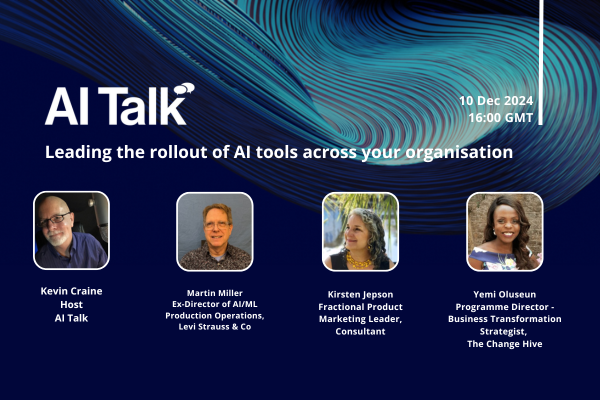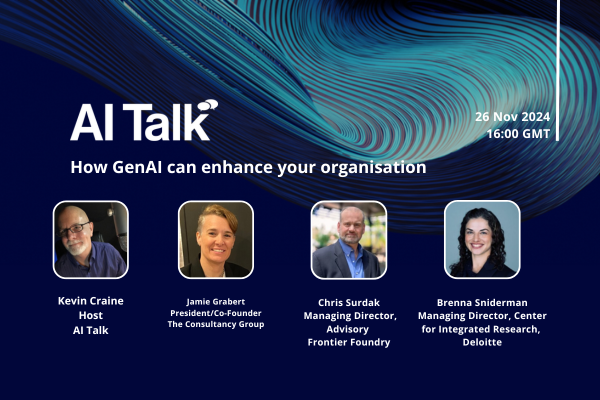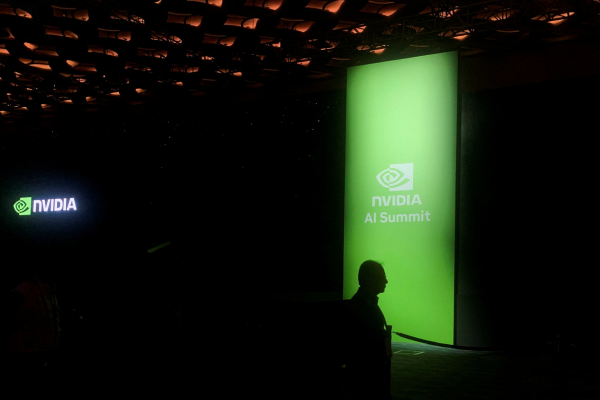AI Talk: Master your GenAI destiny
On 22 October 2024, AI Talk host Kevin Craine was joined by Andrew Wells, Chief Data and AI Officer, NTT DATA Inc; Eve Psalti, Sr Director Artificial Intelligence, Microsoft; and
David Pereira, Chief GenAI Officer, NTT DATA Inc.
Views on news
While technology leaders previously had the blessing of corporate leadership to freely experiment with AI, now it’s time to show returns. The problem is that roughly 70% of businesses’ generative AI projects are still stuck in pilot or testing phase. Although returns can be rather impressive, GenAI projects, generally speaking, take at least 12-14 months to provide return on investment. What is often missing from conversations is the use of GenAI in order to drive competitive differentiation. First, however, the areas where this competitive advantage can be achieved should be identified. It can be a question of how you use GenAI in a car experience as a car manufacturer to curate music or, if you produce fridges, can your GenAI identify yoghurt labels better that that of your competitors? Or are your genAI-enabled agents outperforming others?
Demonstrating ROI
For a start, businesses should generate a very strong backlog of use cases, then prioritise them against ROI and their ability to execute, and then select the top 20 and start the experimentation process. The point here is failing fast and early. With GenAI, you don’t need to be a developer or data analyst to experiment. For developing new use cases, it’s also key to have a centre of excellence serving as a repository of best practices and insights that can be disseminated across the whole organisation. To create trust among users of GenAI, it’s important to create an employee value proposition in terms of employee experience, ROI and company values.
We are living in a multimodal world, where small LLMs are fine-tuned to specific domain knowledge and use cases, which increases these models’ accuracy tremendously. These multiple models will then have an orchestration layer that will help them communicate with each other. Those who opt for open source models must have transparency of how enterprise data is used, who have access to it and how it’s utilised. Currently, there are two areas where GenAI brings ROI at scale. One is process efficiency and the other is software development – while it’s hardly used for the purpose of product creation at the moment. There are tools that can assess genAI’s performance quantitatively with metrics such as perplexity and diversity. However, businesses also need KPI-linked metrics that have direct impact on meeting the challenges on hand. With GenAI adoption progressing, roles must evolve too, as well as leadership. If you want to customise GenAI, start with prompt engineering first, then try RAG (retrieval augmented generation) – a kind of cheat sheet for your LLM. But don’t jump straight into fine-tuning.
The panel’s advice
- Star GenAI deployment with a small project that is grounded in a fundamental business need.
- GenAI is a hammer with a thousand nails.
- Educate your employees about not just what GenAI can but what it should do.
- A promising use case is correlation analysis around performance, i.e., how different data sets drive market performance.
- Create GenAI training programmes for non-technical employees too and drive their adoption of new tools with incentives. Use gamification.
- Curiosity is the most important skill that employers should look for in employees.

Business Reporter Team
Most Viewed
Winston House, 3rd Floor, Units 306-309, 2-4 Dollis Park, London, N3 1HF
23-29 Hendon Lane, London, N3 1RT
020 8349 4363
© 2024, Lyonsdown Limited. Business Reporter® is a registered trademark of Lyonsdown Ltd. VAT registration number: 830519543





